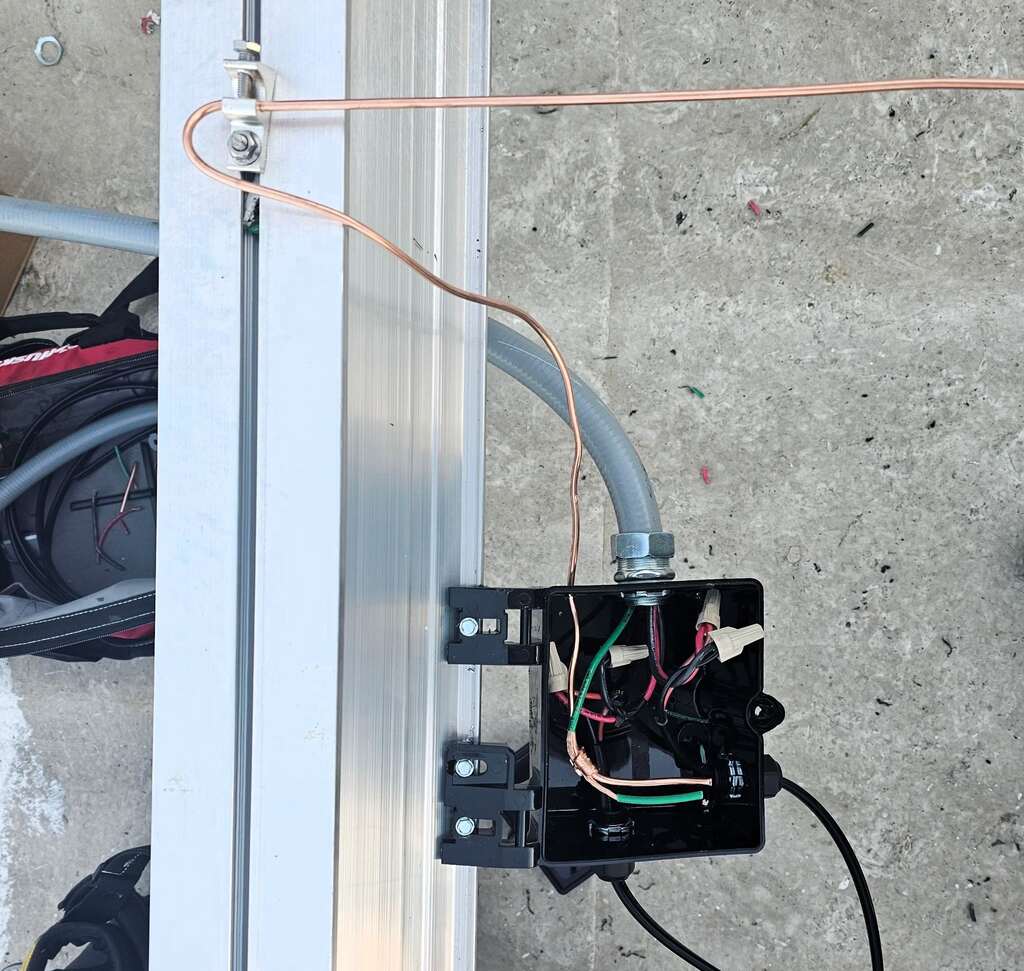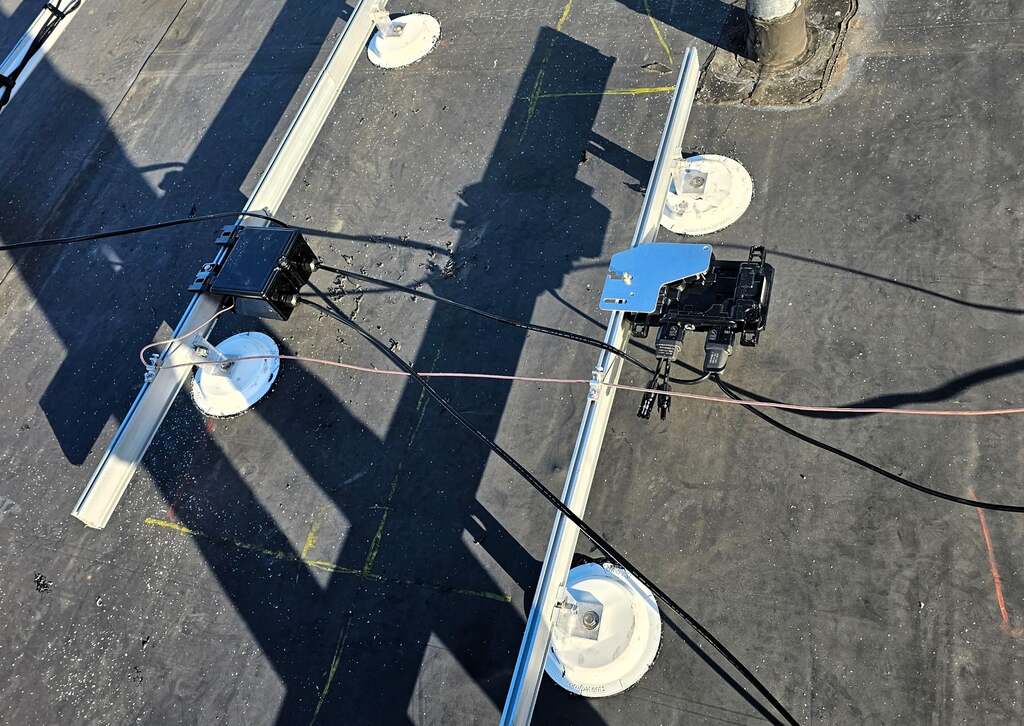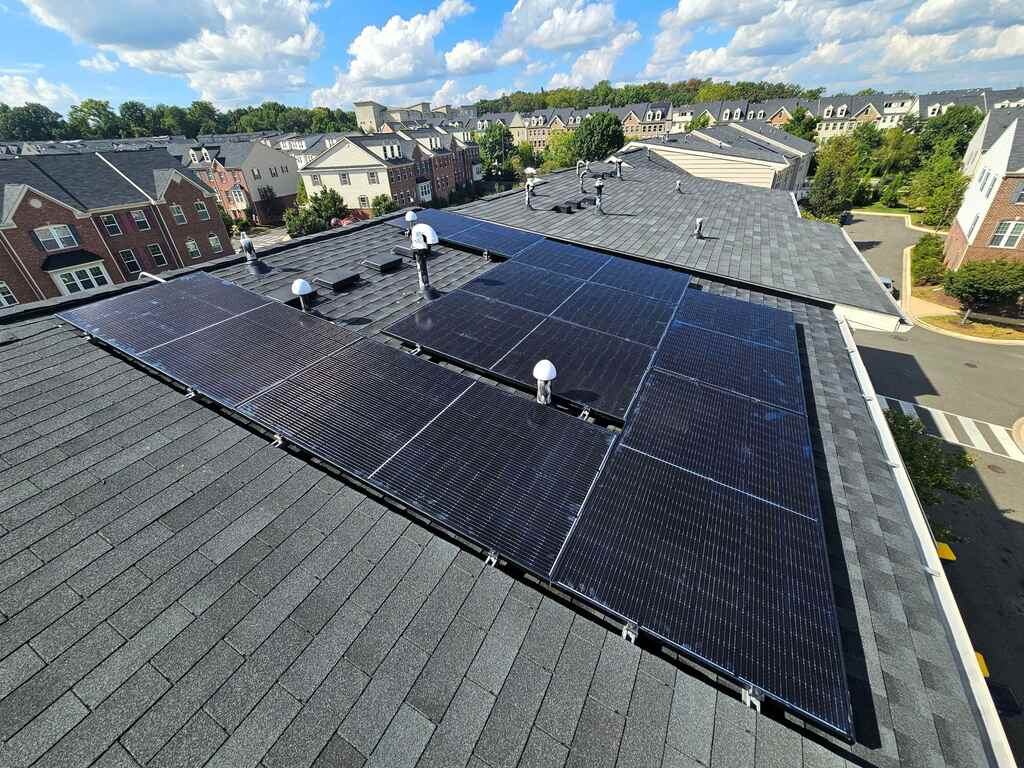
Since solar panels attach to your roof, they’re exposed to all the elements. Wind, snow, rain — and lightning. Are you worried about what might happen if lightning strikes your panels? It’s a valid question! Since lightning is an electrical discharge, and your solar panels are generating electricity, you may wonder if the two interact.
Is lightning attracted to solar panels?
First things first: solar panels do not attract lightning. Lightning isn’t more likely to hit your home simply because you have solar panels. And according to the National Oceanic & Atmospheric Administration, lightning doesn’t even always strike the tallest object. It usually does, but not always. Lightning is unpredictable, and installing solar shouldn’t impact your chances of getting hit, even if your home is the tallest structure around.
That said, solar panel grounding is very important, and not just for lightning strikes, but for other possible electrical mishaps.
What is solar panel grounding?
Grounding means making sure there’s a path for electricity to travel into the ground to avoid damage from surges or short circuits. (Your home’s electrical system should be grounded as well.) For your solar system, a grounding wire connects all the metal components of the array, like aluminum or steel rails and the panels’ aluminum frames. Typically, installers use a #6 American Wire Gauge (AWG) bare copper wire to ground a solar array. (#6 denotes the thickness of the wire.) That copper wire ultimately connects either to a water pipe or to a copper ground rod hammered into the earth next to your house.
Grounding is part of Uprise’s solar installation process — for every single install we perform. As any reputable solar installer should do, we adhere to National Electric Code (NEC) standards throughout our installation process. Below, you can get an idea of what grounding looks like on the roof, with pictures from Uprise installs showing copper wire running into the junction box. Installers attach the copper wire to the racking system before bolting in the panels (typically the last step for the roof team).


Are there other ways to protect solar panels from lightning?
You probably don’t need a lightning rod. They are an option for high-risk areas (southeastern states like Florida and Georgia), but aren’t common components for solar systems in residential areas like the DMV.
The Enphase microinverters Uprise uses come with integrated surge protection. You can see what a microinverter looks like in the picture below. It’s the silver and black device attached to a rail in the middle of the photo. Wires from the back of a solar panel will snap into connectors on the microinverter. And check out that sweet copper wire grounding the array nearby!

What happens if lightning hits solar panels?
Even if a system is properly protected, there’s still the outside chance that lightning could directly strike your solar panels. It’s uncommon, but certainly not impossible, since again, lightning is erratic. Extreme heat from a direct strike could burst or melt the panels; while glass protects your solar modules from the elements, there isn’t much it can do against a bolt of lightning. But again, it’s rare for lightning to directly strike solar panels. Indirect strikes could also potentially impair your array; for example, a voltage surge could occur in your solar system if lightning strikes on or near the grid. But that’s exactly where grounding helps out.
If firefighters need to access your roof for whatever reason after a lightning strike, Uprise’s designs account for that. DC’s Department of Buildings requires what are called fire setbacks around the edges of a solar array, so firefighters can move around on the roof. Fire setbacks differ for flat and pitched roofs. If you have a rowhome with a flat roof, there will be a 12” setback in the front and back. If your home has a flat roof but isn’t connected to other homes, there will be a 12” setback along every side of the roof. And pitched roofs, on homes over two stories, require an 18” setback at the ridge and a 12” setback by the gutter.

What about the other elements of a thunderstorm, like heavy rains or wind? Are solar panels protected against those?
Absolutely. Solar panels are built to withstand high winds, often around 140 miles per hour (mph), but have been known to survive 180 mph winds in a hurricane. And rain can even be beneficial for your solar panels, doing the work of cleaning them off for you.
What should I do if lightning strikes my solar panels?
Call Uprise. We’ll check over your system for you and see if we need to replace or repair any components so your solar panels can go back to functioning optimally. Homeowners insurance policies sometimes cover solar panel damage, but you’ll need to check your specific policy to see if yours does. And remember, if you went solar through Uprise’s no-cost solar program, we cover maintenance costs for 20 years. So if lightning damages the panels on your roof during that period, please let us know and we’ll come out right away.
What if I have more questions about solar and lightning?
Please reach out to us if you have more questions! Overall, the risks of lightning for solar panels are very minimal. But if you have any concerns, we’d be happy to talk with you. You can fill out the contact form on our website here or call us at (202) 280-2285.
